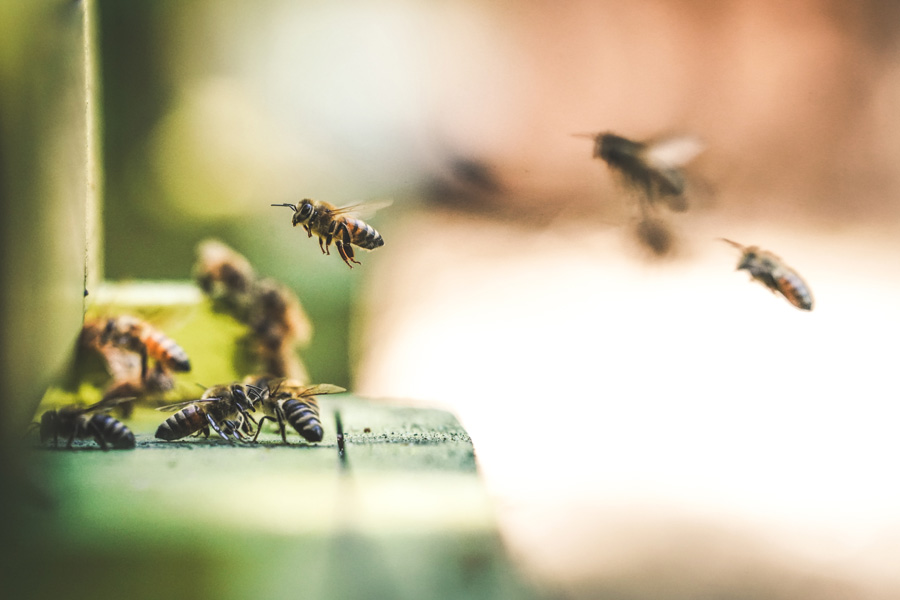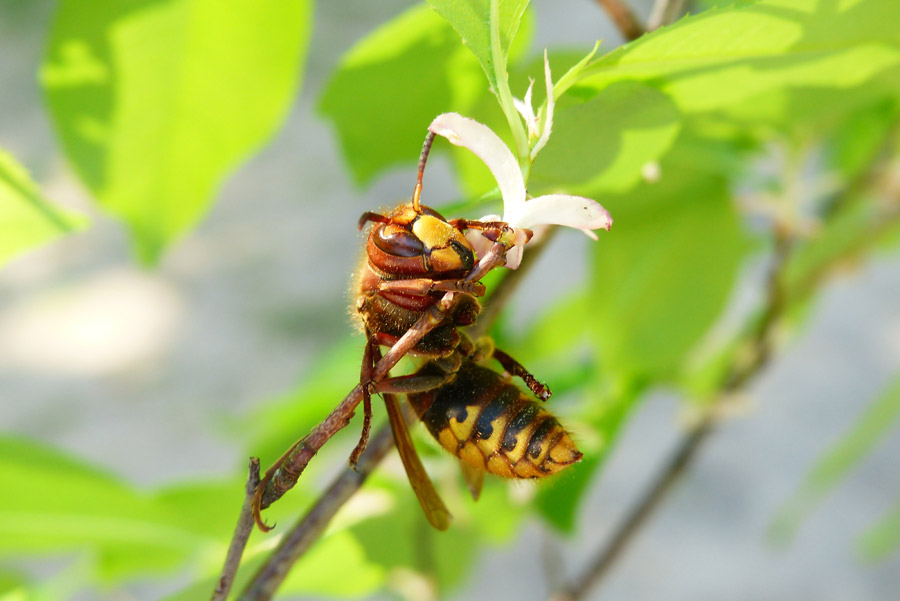When a bee or wasp stings us humans, oh my – it hurts. So what happens if your dog gets stung by a bee? Here are the common symptoms and what you can do about it.
Buzzy bees and wasps can be quite annoying – especially for a dog. As such, it’s not uncommon for a dog to try and eat a bee or at least have a little sniff. The result of this can be a bee sting to the nose, paw or even inside the mouth. Ouch!
Indeed, if your dog gets stung by a bee or wasp it can spell trouble. You might not even see if happen, so it pays to know the signs and symptoms of a bee sting.
Certainly, bee venom can cause mild irritation right through to a full-blown seizure, so prompt action is recommended.
Image source: Eric Ward on Unsplash
Signs your dog may have been stung by a bee
There are a few indications that a bee has stung your canine chum. Here are a few of them.
- Your dog suddenly starts chewing or licking its paw, paws at its face and may appear somewhat distressed
- Yelping
- Swelling occurs
- Vomiting (this is usually only in severe cases)
The type of bee sting can vary. It may be mild, causing only slight pain and irritation and lasting only a few minutes. Alternatively, it may cause intense pain, swelling and redness.
Additionally, some dogs are extremely sensitive to stings and bites and can have a severe reaction. Without a doubt, it’s important you act fast, but it’s also essential to remain calm. This advice is the same for any pet emergency.
Image source: Krzysztof Niewolny on Unsplash
What action to take
If your dog gets stung by a bee, look for the stinger. If you can see it, the next step is to try to remove it. This may help reduce the amount of venom injected into the dog’s bloodstream.
Warning: don’t use tweezers or your fingers as this may make things worse, Instead, scrape a credit card or your driver’s license across the dog’s skin to try and flick it off.
In cases of a severe reaction, contact your vet. A vet can provide medication to reduce the pain and swelling, for example an antihistamine. Additionally, if you can see the stinger but you’re not able to remove it, your vet can assist with this too.
Where the symptoms are mild, you can take the following action.
- Pop an icepack in a towel and hold it on the dog’s wound to reduce the swelling. Don’t have an icepack handy? Wet a face cloth with cold water, wring it out and apply it to the sting.
- Try mixing together a teaspoon of baking soda and some cool water. Apply to the affected area to help soothe the pain.
- If your dog is constantly scratching or licking its wound, you can try bandaging the wound to reduce the likelihood of infection. Of course, this will depend on the location of the sting. Have you ever tried bandaging a dog’s nose?!
If the sting is located in the dog’s mouth, your fur friend may find it difficult to eat. Make sure he or she has plenty of water and, if you normally give dry food, try feeding a moist, softer food.
Even if the symptoms do appear to be mild, keep watch as allergic reactions can occur from 20 minutes up to a few hours after a sting.
Signs your dog is having an allergic reaction to a bee sting include:
- Difficulty breathing
- Weakness
- Profound swelling
Image source: Hiro Takashima on Unsplash
Preventing bee and insect stings
Of course, bees play an important part in all aspects of our ecosystem — so we don’t want to kill them unnecessarily. However, to help prevent your dog from being stung by a bee or other insects there are a few actions you can take.
Regularly check your garden and the eaves of your house for hornet nests and spider webs. Try not to leave food and drinks out, as this can attract bees and wasps.
Also, keep your dog off the flower beds, as this is where bees love to hang out and try to maintain a close eye on your beloved fur friend — just in case!
Want to know more about summer safety for pets? Check out this vet’s warning about hot weather hazards.










Leave A Comment